Referential Concepting: Is Anything Really Original?

“Immature poets imitate; mature poets steal; bad poets deface what they take, and good poets make it into something better, or at least something different. The good poet welds his theft into a whole of feeling which is unique, utterly different from that from which it was torn.” - T.S. Eliot
Is anything really original?
In 2023, LLMs delicately dissected the vast body of human knowledge into individual words, or 'tokens', and then gently wove them into an intricate tapestry of semantic mappings, that could be manipulated through the most intuitive interface humans know – natural language. This newfound ability to map and bend the digital fabric of our world not only illuminated the paths of knowledge but also unveiled the hidden trails of piracy, blurring the lines between what is creative and what is stolen.
How do we navigate the thin line between inspiration and plagiarism, when nothing feels truly original?
The Referential Concept
In past chapters, we’ve worked through ways of making ads that disregard this line, gradually introducing more sophisticated ways of copying.
Congratulations, you’re now an artist.
Similar to large language models, we've broken down the ads in our space into smaller pieces (in ads we call them components, while in LLMs we would call them tokens), and then mapped those in relation to another, helping us to understand how things are related and predict what the next best ad is.

Today we’re going to become good artists, and move away from piracy toward creativity by putting our own flavor on what we've learned.
By expressing choice and curation in how we translate what we see in the world into a final product, we will start to get into a space that is more conceptual. While you should still prioritize ideas that have the strongest data (e.g., things that went viral on their respective channels), you should start tying together everything you’ve learned and expressing more intuition in how that translates to a final product. In essence, you'll be throwing in your own sauce without going totally off the rails.

When to use the referential concept
From a strategic perspective, teams should use the referential concept when they want to make a high impact, medium risk creative play. This is good for teams who already have creative wins and are not in immediate risk of creative fatigue.
From a skills perspective, individual contributors should start using the referential concept after they’ve successfully copied from competitors, found wins in every form of basic iteration (text hook, script, visual hook, visual sequence), landed on wins copywriting via the advanced iteration, and successfully mashed together existing concepts through the conceptual iteration. If any of these concepts are new to you, you should go back to The First Principles of Ads and start from there.
There are no shortcuts to marketing mastery. Building your skills brick by brick takes patience but gives you a good idea of what works in the market, and why — through deconstruction and manipulation of these ads (and your own internal best ideas), you should have a great sense of what your top levers are in the strategy.
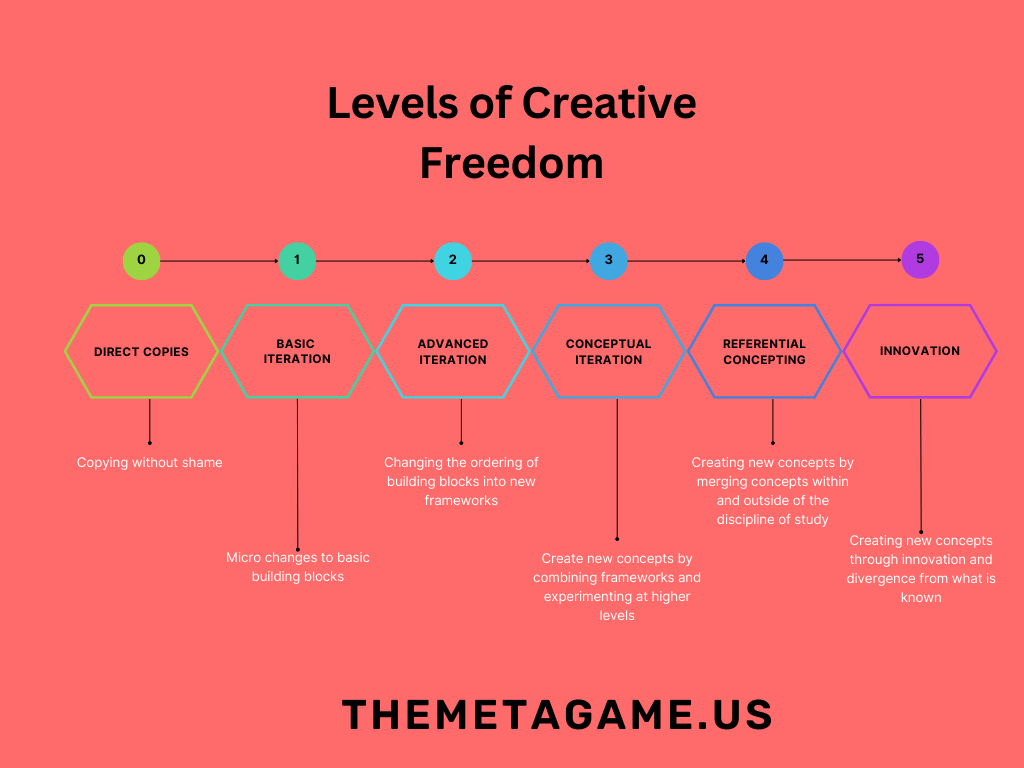
8 ways to inspire concepts
"I think the artistry is in having an insight into what one sees around them. Generally putting things together in a way no one else has before and finding a way to express that to other people who don't have that insight so they can get some of the advantage of that insight that makes them feel a certain way or allows them to do a certain thing. -Steve Jobs
If artistry is having insight into what one sees in front of them, becoming a great artists is choosing the right things to be inspired by.
Generally speaking, most new trends in creative strategy — at least in relation to subscription apps — are derivative of content that trended first on organic channels.
As a rule of thumb when it comes to internet trends: if you’re seeing it on Reddit or TikTok you might be first, but if you’re seeing something on LinkedIn, you’re probably last.
Here are the 8 channels I have found useful in generating winning ideas that are not direct competitors.
As a note, it's generally worth prioritizing the hashtags, communities, searches, or market segments that are largest and most relevant to your brand – and within those channels, the content with the highest engagement metrics.
1. Indirect Competitors
This will probably come as no surprise given a cornerstone of The Meta Game is copying competitors. But at this point, we should have already been around the block a few times in our competitor set. In order to find something new, you should get yourself out of your neighborhood and look toward industries in other verticals. E.g., subscription apps if you are in CPG, etc. When you find something interesting, instead of stealing the concept pirate style, down to the last period mark, apply your own approach to the concept, using your best practices to make it work for our business.
Example
Cerebral was one of the first D2C brands that cracked open the "Notes" concept
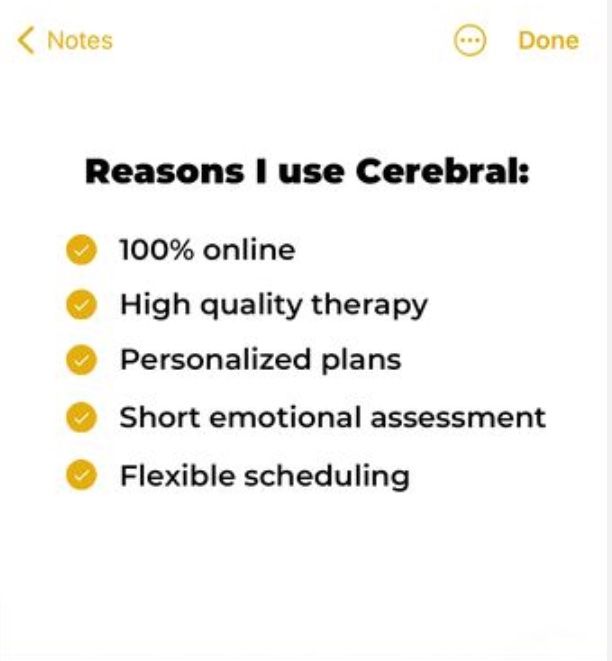
For CPG brands, native-style concepts such as Notes and Twitter threads don't tend to be particularly effective. Instead, product shots tend to perform well.
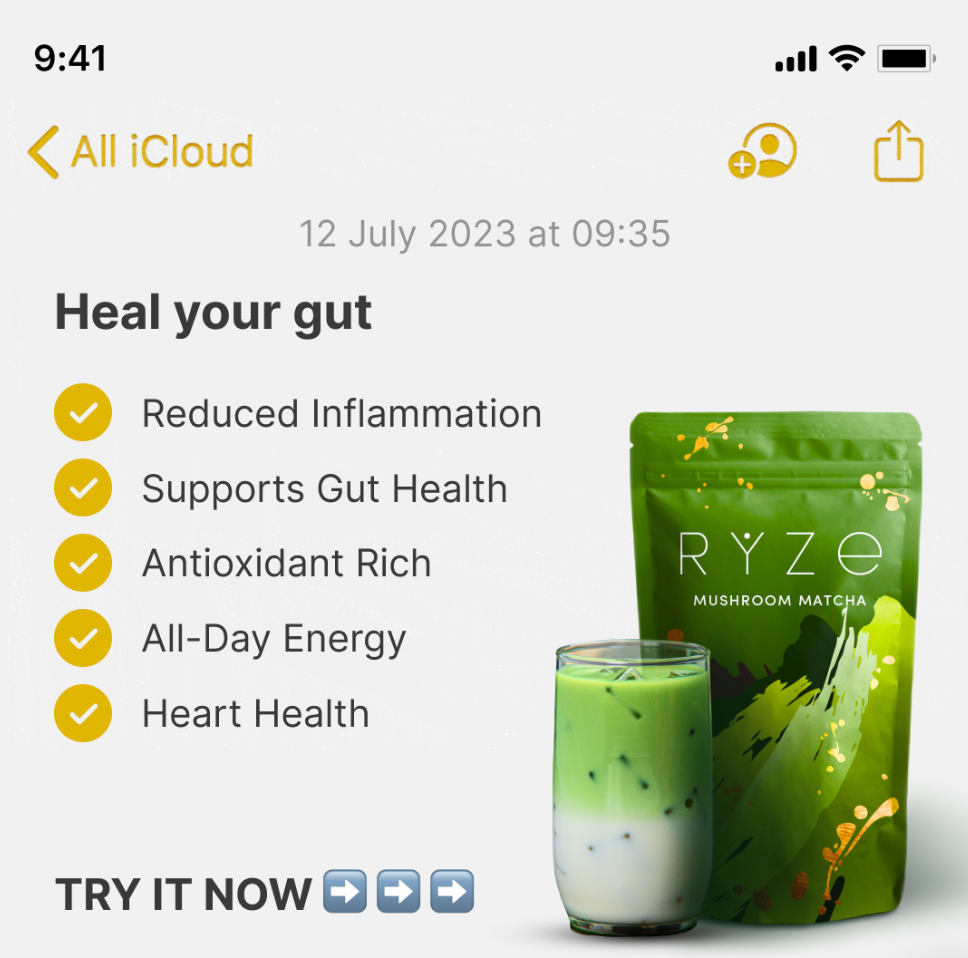
By applying product photography (which doesn't feel particularly native), to this concept, Ryze was able to make this concept work for their brand.
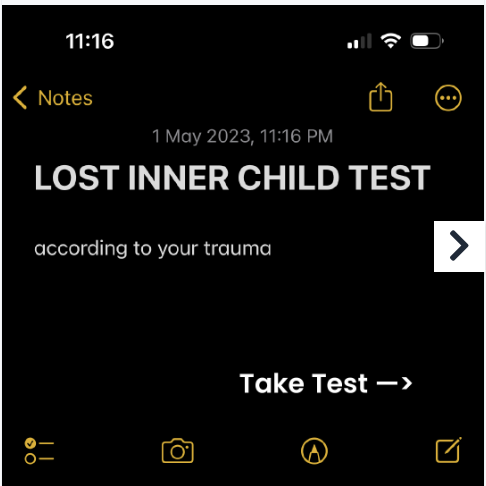
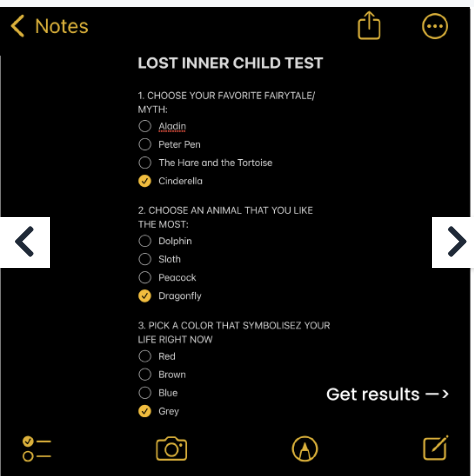
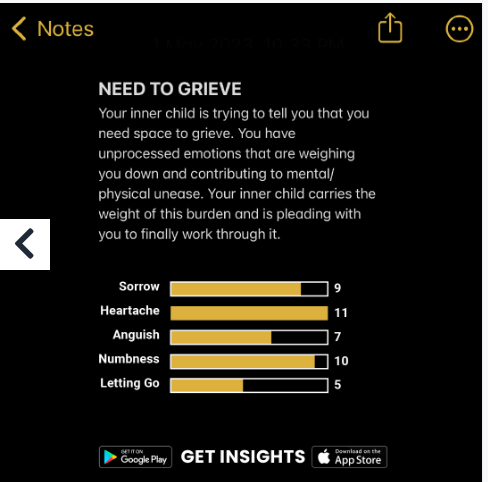
Similarly, Breeze has had a lot of luck with their inner-child Trauma Test. Instead of using a value driven (such as the Cerebral example) or testimonial driven concept, they adapted the concept toward their top performing messaging.
2. TikTok
TikTok is the new form of discovery. It isn’t just a social network, it’s a whole search engine, and they make their platform data very visible. While discovery in instagram is mainly driven by hashtags, TikTok is much more likely to index on every part of the content (post copy, video content, hashtags, etc). They also give much more visibility into trends, which allows you to stay on top of what’s new.
As a result, one of the main ways to stay on top of trending messaging and concepts is to mine TikTok, for both messaging and content types.
Example
Trauma response messaging and this design was trending on tiktok in 2022, at the same time we were experiencing messaging fatigue at Calm.
I was able to workshop some messaging ideas in steps to unlock a new messaging territory.
I applied a mashup of some of our top performing emotional signs and borrowed some messaging from examples from high performing tiktok videos.
@calm The first step to healing is acknowledgement. 💙 #calm #mentalhealth #habits #selfcare #traumaresponse
♬ In My Room by Chance Peña - chancepena
This was successful as an organic post, which gave me confidence to translate it to paid ads, adapting to our top performing visuals and “3 signs” frameworks.
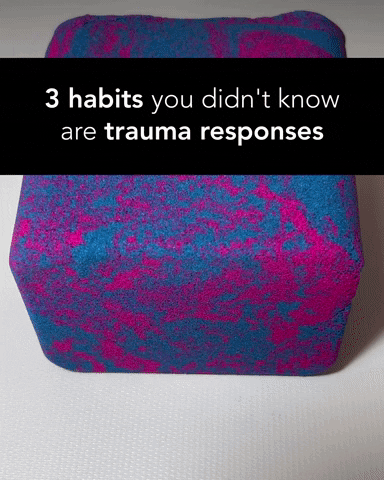
3. Instagram
If you are seeing something on Instagram, it’s likely already downstream of Tiktok.
However, a practical reason for mining content from Instagram is that it acts as a signal that it will work on Meta. I’ve found that if you select the most highly engaged with visual in an instagram hashtag (e.g., #oddlysatisfying, #satisfying, #nature, #natureporn, etc), it is likely to be the top performer in paid ads.
The same logic can be applied to your organic social page. It’s important to review top performers once a month and translate them to your paid testing (this is even a great reason to share design resources across your organic and paid teams).
Let signals from the organic market save you the guess work. It’s helpful to evaluate likes, engagement, and views across content types to get a sense for market sizing, and to prioritize the ideas within a vertical based on size.
Examples
I found #Cinema4d posts were also trending in the #OddlySatisfying hashtag. I reached out to an up and coming 3d artist I found in the hashtag to re-create a top-performing viral animation.

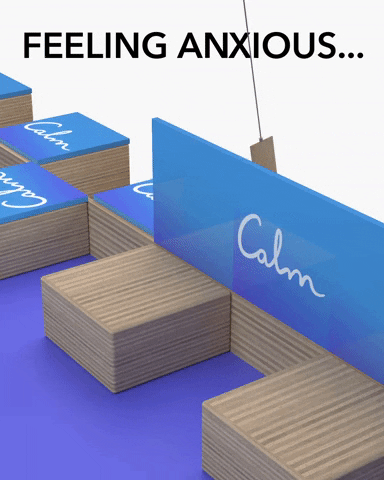
This high performing rainbow visual later was adapted for paid.
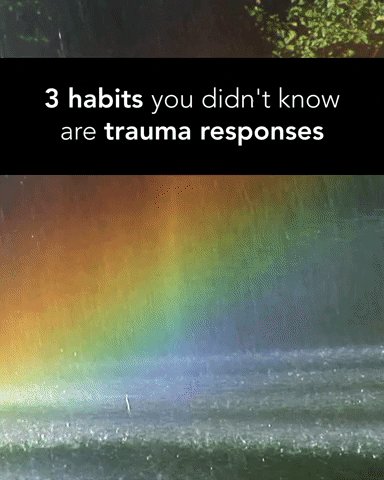
4. Reddit
On most social media, creation and engagement with content is highly visible and occurs at massive scale through algorithms. While tiktok is great at identifying trends at tip of the iceberg, and instagram hashtags are helpful for figuring out what is fully mainstream, browsing Reddit is like peering over the edge of the abyss, directly into the collective consciousness. Reddit is great at identifying hidden criticisms, taboos, and fixations that don't show themselves with less algorithmic polish. Let those edges become your insights. A sense of anonymity and openness toward NSFW content, plus Reddit's voting system show what people really care about.
Memes, funnies, shower thoughts. Nature Porn, Food Porn, actual porn. Personal finances. Stocks. Meme stocks.
Example
I regularly mined: r/Earthporn (#18th largest community), r/NatureisFuckingLit(#51) for creative ideas at Calm. r/OddlySatisfying’s (#54) relative community size gave me confidence in the hypothesis that Oddly Satisfying content was a huge market.
Manson Chen found the idea for Farming videos from viral r/OddlySatisfying content

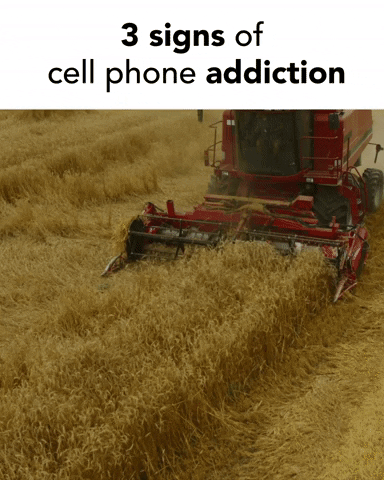
5. Google Trends
Google search trends are unlikely to give you perspective into social media trends, but what they are helpful in is assessing market forces, and helping you uncover ways to position and message your product or explain head/tail winds in creative strategy.
For instance, top growing apps in 2023 have leaned into messaging for ADHD and Trauma. A quick look at the charts shows why this is so powerful.
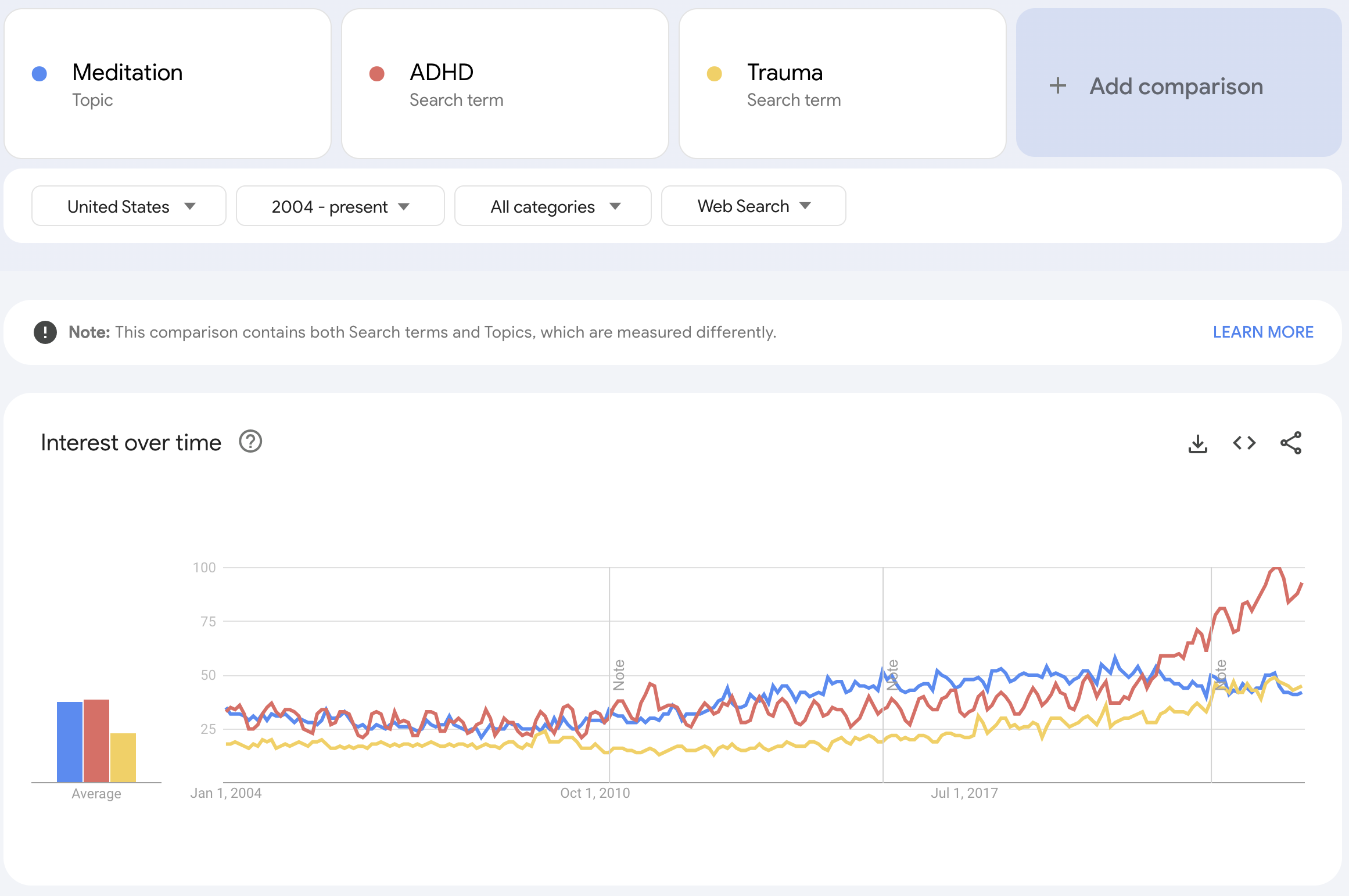
6. Pinterest Boards
Once you’ve established visual verticals, you can feed them into Pinterest. Pinterest will automatically suggest content based on what you’ve provided, acting as your own proprietary recommendation algorithm. This will automate a lot of your search for creative ideas and take a load off of constantly searching.
Here is my secret, personal board I used to surface Oddly Satisfying content.
7. Product Analytics
Product analytics are really helpful in understanding usage trends and then applying them to marketing. This may be as simple as feature usage. Since most apps don’t have the same amount of discovery for certain features, you may not want to look at metrics such as the pure number of sessions. In addition to raw usage in aggregate, you should be looking at the repeated sessions of a feature, that are indicative of a really sticky or underserved idea.
Additionally, it’s helpful to look at time of day across feature usage. If there is a surge in product usage at different times of days between features, this may be a huge market opportunity
For instance, at Calm we found there was a big surge of usage before bed, which helped with the development of Sleep Stories and other sleep features, and opened up the TAM for us on Meta.
8. User Research
Generally speaking, comments are the easiest source of data for user research, but this also includes data from your customer service team and actual, hard user research from a UX team.
User Research will be helpful in carving out your customer profiles and understanding what their real pain points and use cases are.
It may also help define who is primed for your product on Meta.
For instance, in health and fitness products, you’re likely to have some tranche of users who are experiencing active pain, a tranche that falls in and out of the habit, and another that use your product as a regular vitamin.
The old adage goes, it’s better to sell pain killers than vitamins, and that couldn’t be more true in the highly dopaminergic environment of Meta.
If you are weighing two options, between messaging that appeals to immediate desires, and messaging that appeals to higher aspirations, the larger market on Meta is likely to be the former. Choose the message that is a Pain Killer.
Developing ideas into concepts
Now that we’ve been inspired with ideas, we need to figure out how to activate them into something tangible.
It’s time to start cooking.
For a new value proposition, creative idea, or a consumer insight, all you might need to do is activate it through a single line of copy. For others, you may need to work through the lense of a control script.
A referential concept may be a single idea such as a new visual territory (e.g., Oddly Satisfying creative) and easily mashed up against your existing top performing copy. But it might also be a mash-up of many different ideas and insights, or live outside your current creative frameworks, such that you need to develop new conceptual ideas (such as a skit or a breathing exercise).
As an individual contributor or asynchronously as a team
A good starting point is to moodboard all your references (including both our inspiration and top performing ad elements). In doing this we're setting the mise en place before we start cooking. In order to constrain the dimensions on which we're brainstorming, it helps to split things into visual territory and messaging territory. Then, we begin playing with the best way to activate the idea.
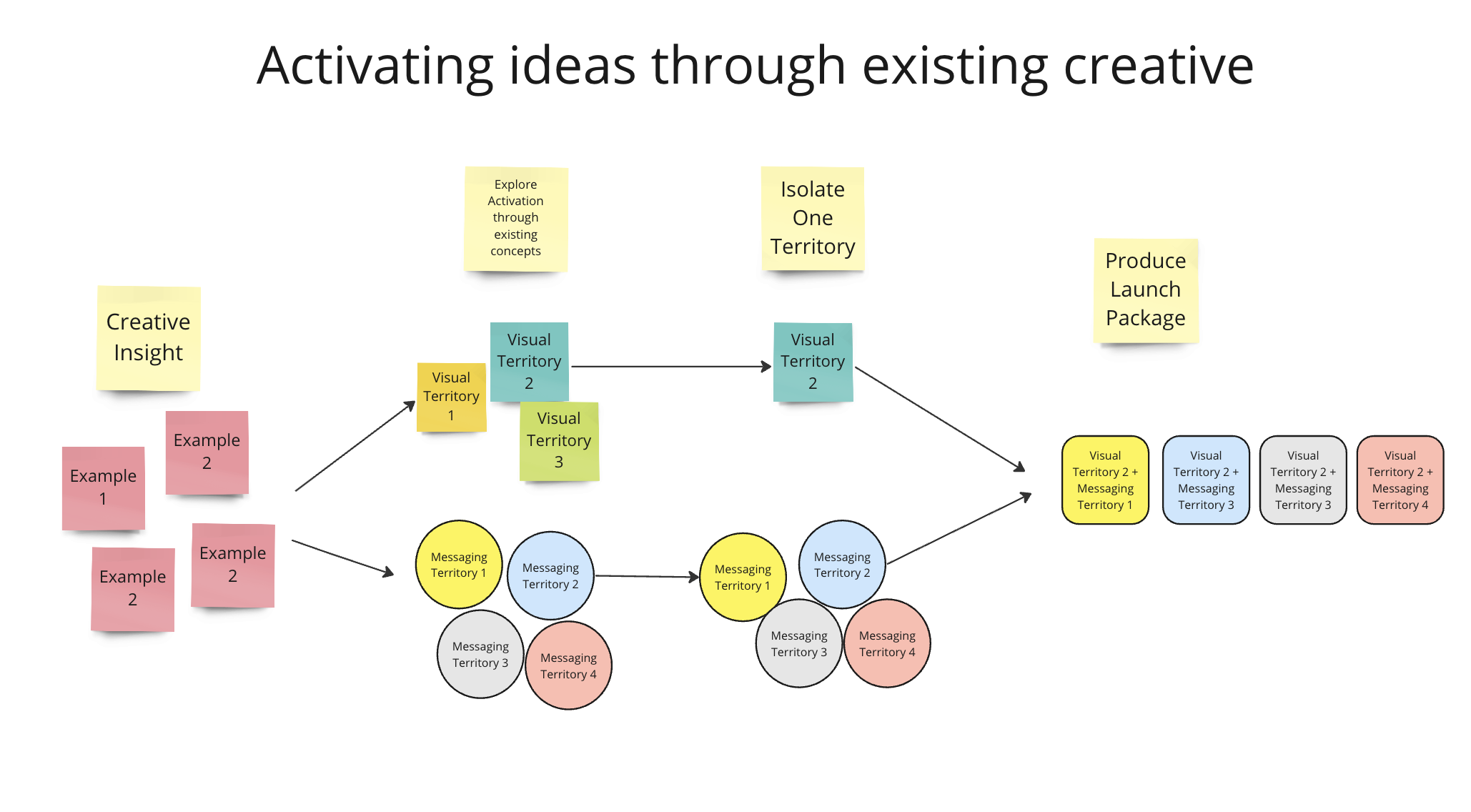
Activating an idea through our existing creative is usually easiest for ideas that are a simple consumer insight or hypothesis such as use case or value proposition – or a visual territory we would like to test into (e.g., Oddly Satisfying) that can be paired with an existing copy script.
In this example above, let's assume we've noticed that there is a feature in our app performing really strongly.
We've selected a visual territory based on our previous winners. We feel relatively confident that any of our copy frameworks could message this product feature, but aren't sure which one is strongest. As a result, we test four scripts, focusing on this feature, and pair them with a relevant visual territory in a iterative launch package.
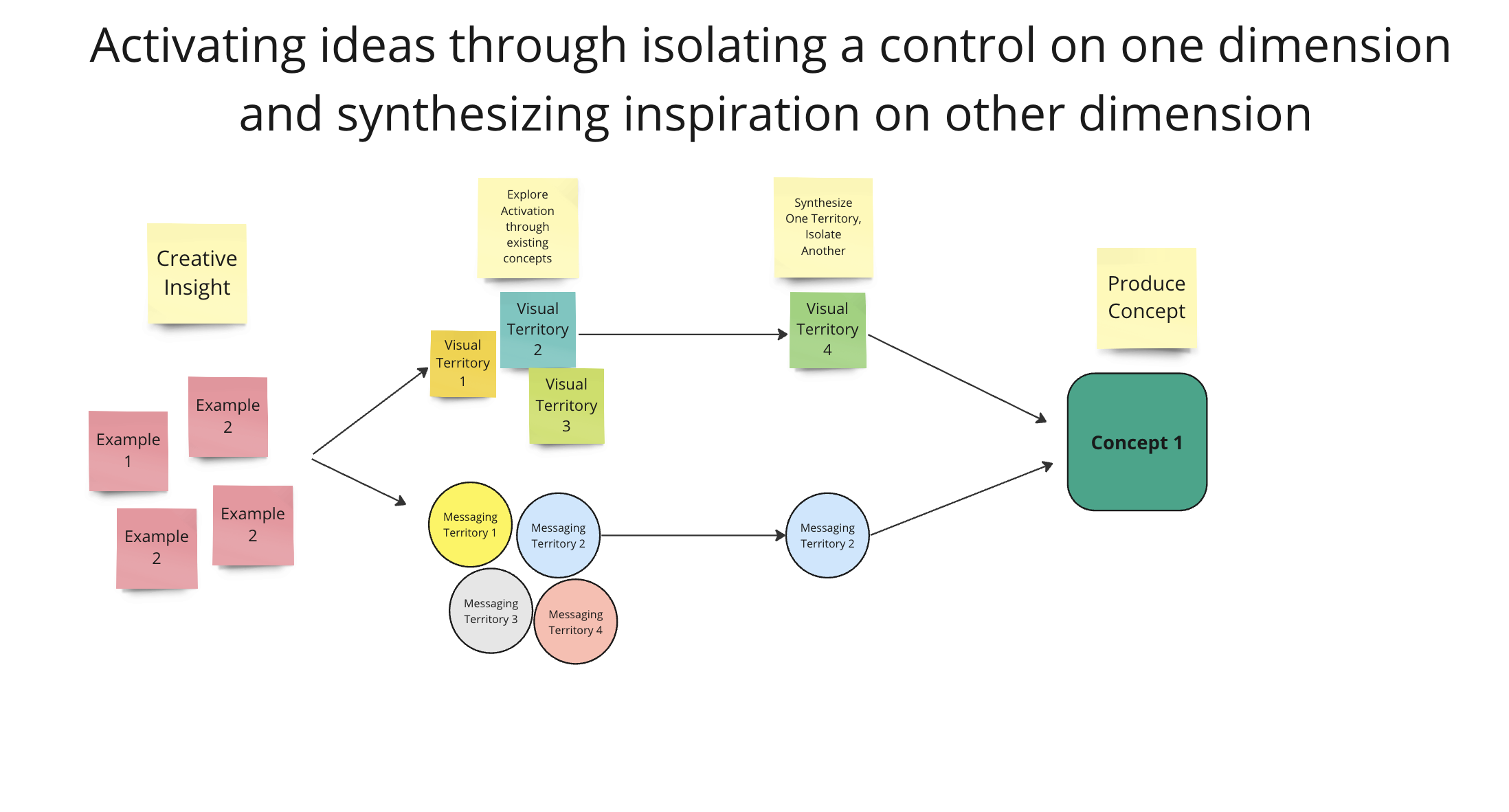
Suppose that when we apply this user insight to our control messaging, it no longer makes the control visual territories relevant conceptually.
In this case, we will want to constrain our messaging to one script and develop a new visual territory that works with the messaging by synthesizing all of our visual references.
Landing on our messaging first and thinking through the activation of the visual side of the concept second helps us determine if there are roadblocks which we need to overcome in production.
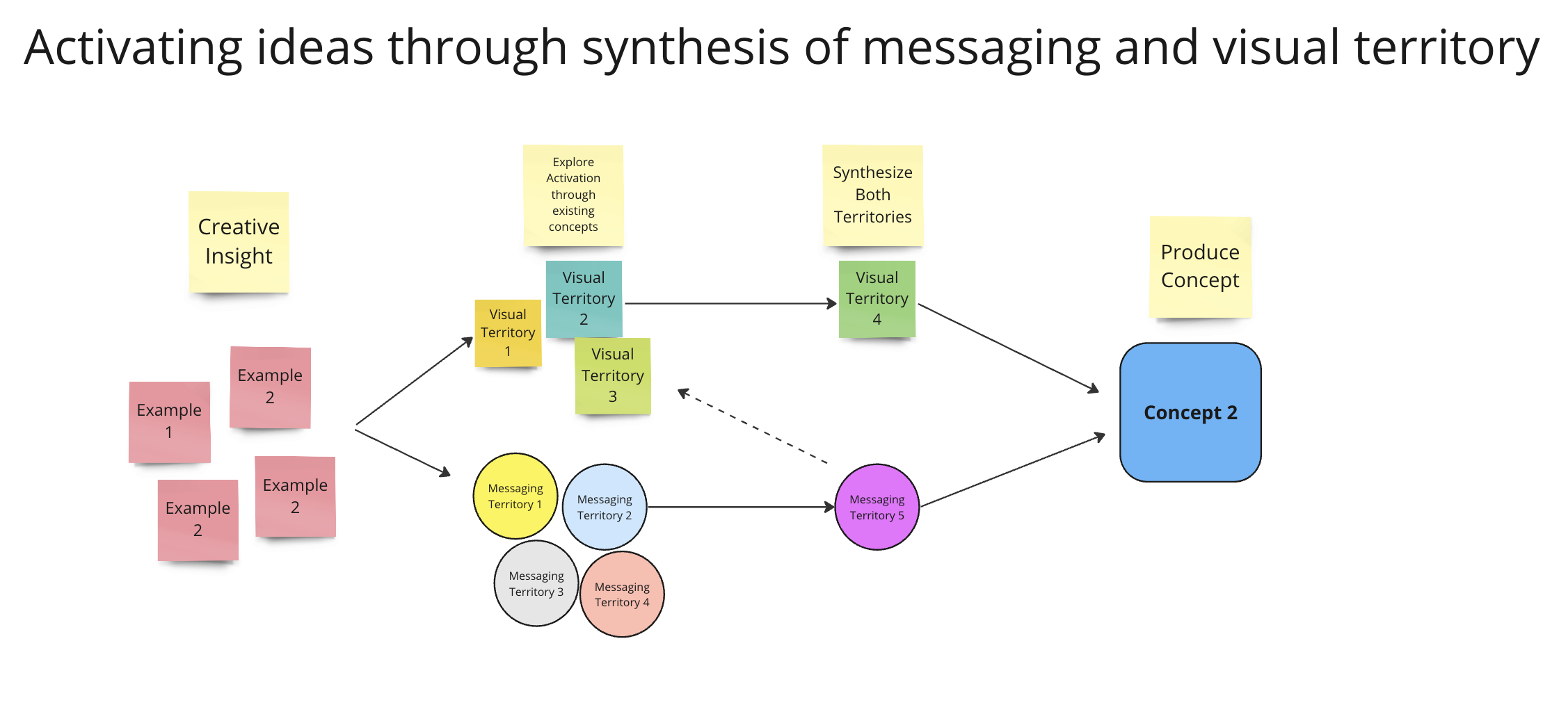
Suppose what we find is that we have a consumer insight or organic trend that doesn't fit any of our existing messaging territory in a way that feels effective. In this case, we will want to synthesize the messaging into something that does accomodate the idea before figuring out how we activate on this visually.
This could work the other way around as well – where we have a clear sense of what we want to act on visually, but not sure how to activate on messaging. However, this is usually is less of a problem, as messaging can easily be fixed with some creative copywriting (as opposed to creative production blocks, which tend to take longer to solve).
The Bounded Brainstorm
A common occurrence in marketing is the creative pitch or brainstorm, where someone pitches a lofty and aspirational vision for a creative idea, with airy language, or hefty production budgets and agency requirements, that isn’t rooted in any observable data or point of reference. This type of open-brainstorming usually is not constructive, and what I have found to work better in reality is focusing the meeting on very clear problems or iterative ideas.
More brains looking at a constrained problem is helpful in getting unstuck and finding solutions.
For example, when we are in need of new concepts, an effective brainstorm might consist of "Consumer insights from UXR", or "Social Media Messaging and Visual Trends".
The follow ups would then be working asynchronously to explore potential territories, and then re-convening to break through specific roadblocks -- such as "UGC Production for Podcast Skits" or "UGC Production for Product Usage" to assess how to activate on any gaps that arose when evaluating final scripts in copy.
There are of course times where we will get too hyper-focused and it will be good to open up the constraints of our brainstorms to be more broad, which we will evaluate in our next edition – the final chapter on the Creative Hierarchy of Needs.
After this, we will move onto the next part of The Meta Game – applying the creative hierarchy of needs to our week to week strategy.